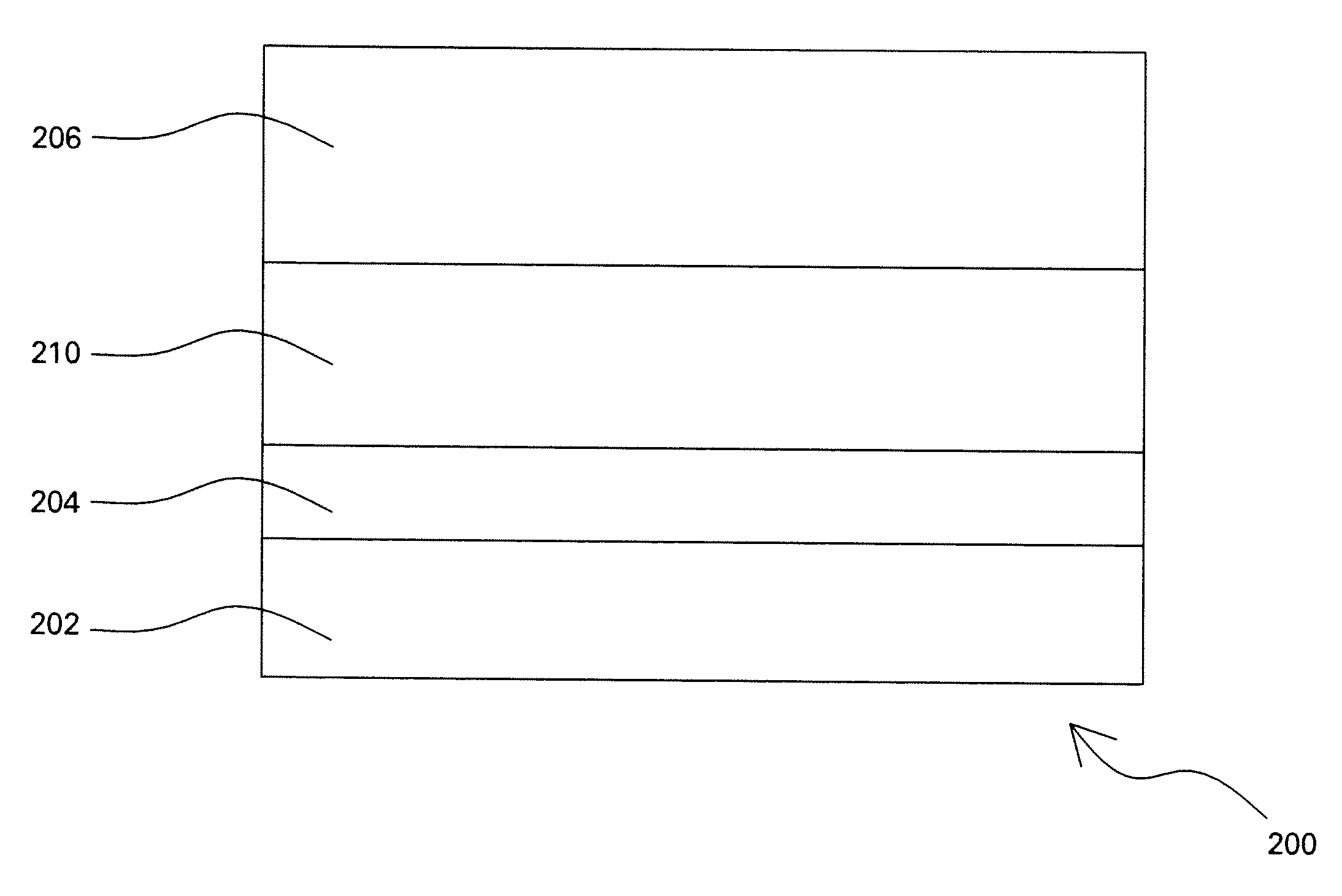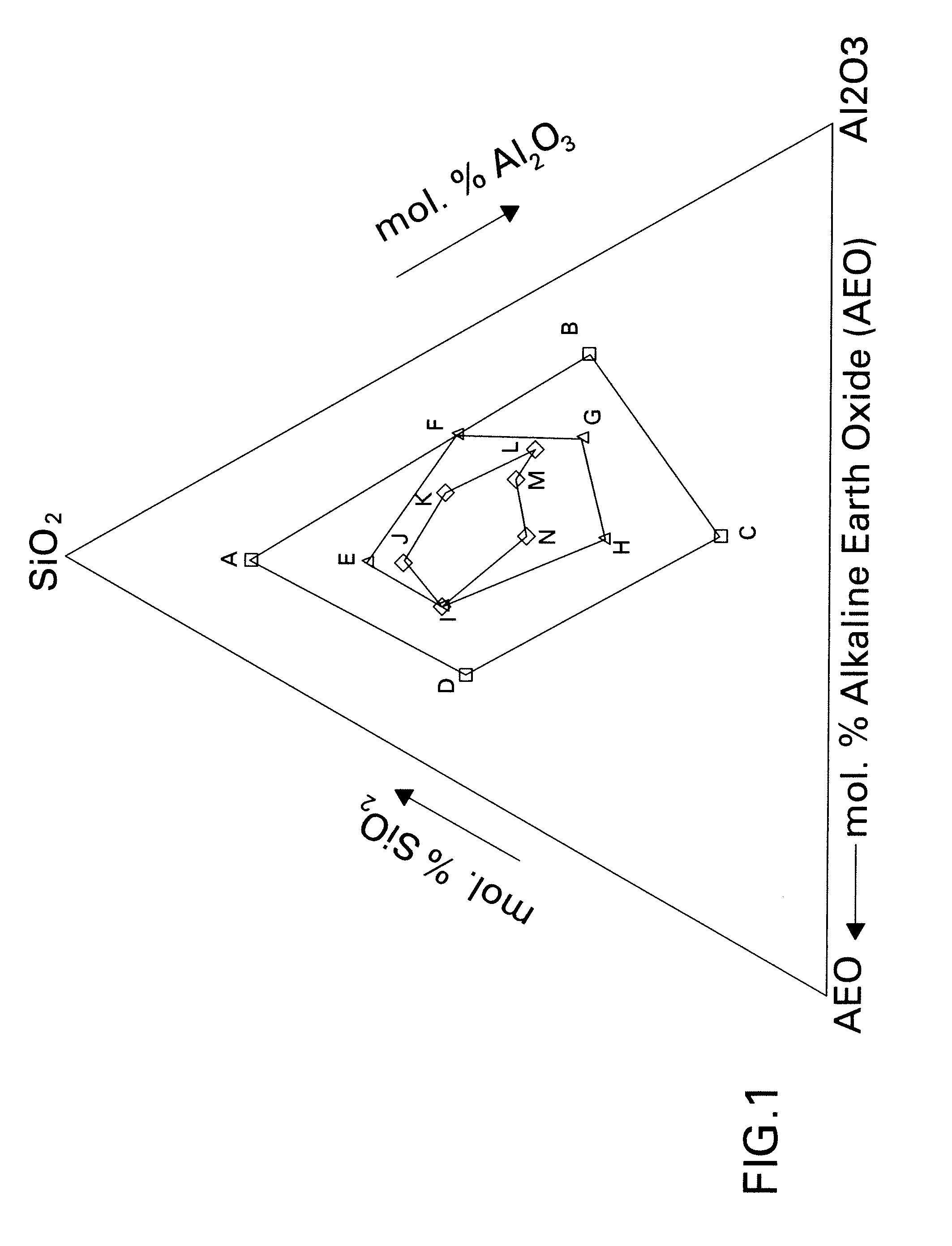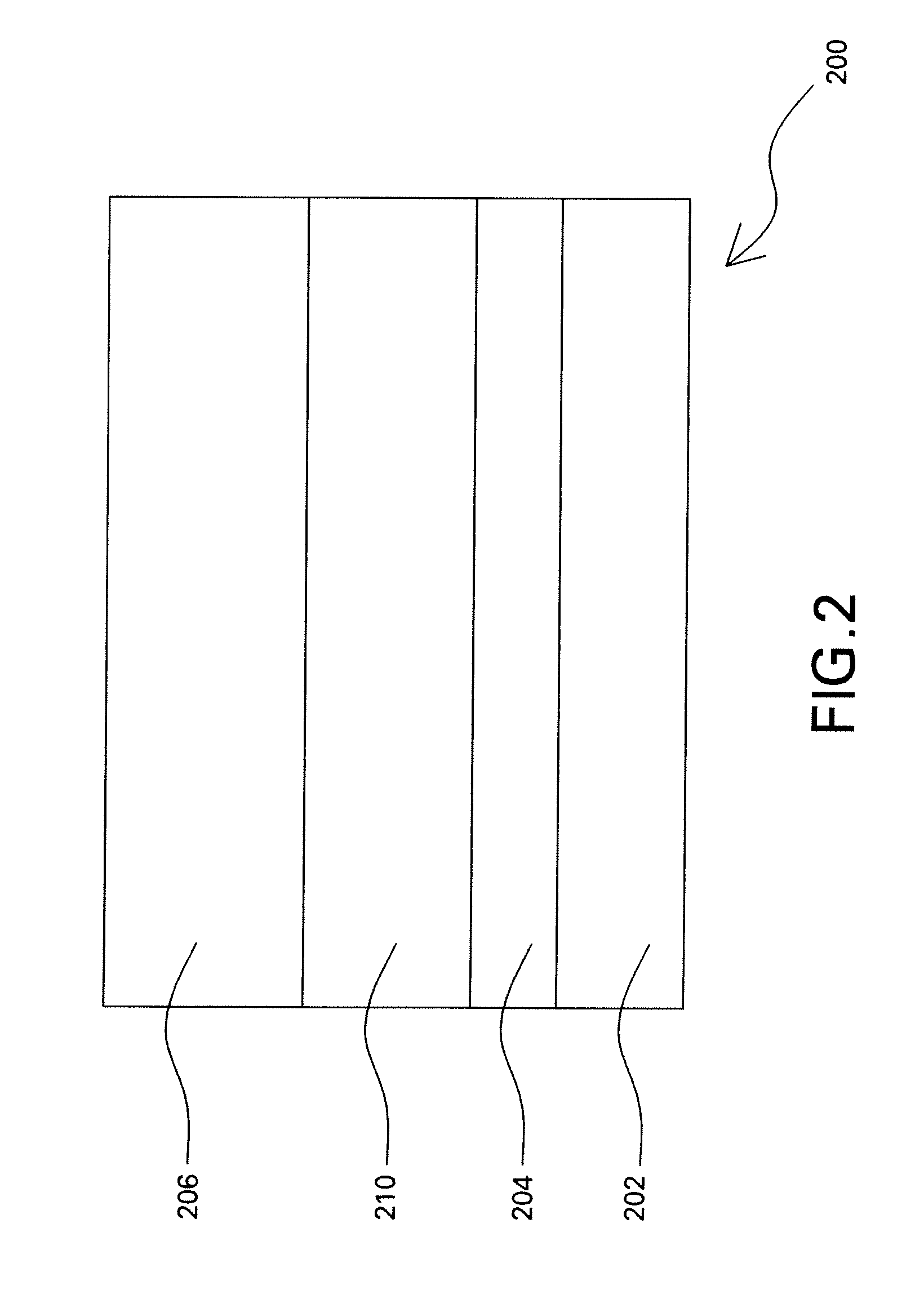Articles for high temperature service and methods for their manufacture
a technology of high temperature service and manufacturing methods, applied in the direction of silicates, carbides, superimposed coating processes, etc., can solve the problems of significant surface recession and mass loss of silicon-bearing materials, significant degradation of material structure, and unacceptably high recession rates, etc., to achieve the effect of improving the capability
- Summary
- Abstract
- Description
- Claims
- Application Information
AI Technical Summary
Benefits of technology
Problems solved by technology
Method used
Image
Examples
example 1
[0031]A silicon carbide ceramic matrix composite substrate was coated by plasma spraying the substrate with a silicon bondcoat and then a layer of yttrium disilicate. Then an alkaline earth aluminosilicate sealing layer having the following composition: 50 mole % SiO2-25 mole % Al2O3-25 mole % alkaline earth oxide, where the alkaline earth oxide in this case was a mixture of BaO and SrO, was deposited on the yttrium disilicate layer. The substrate was sectioned and metallographically examined after spraying, and a network of fine cracks was observed throughout the alkaline-earth aluminosilicate layer. The coated substrate was then heat treated in air for 30 minutes at 950 degrees Celsius followed by 30 minutes at 1020 degrees Celsius. Another specimen having the same set of coatings was heated to 1000 degrees Celsius at a slow heating rate and was removed from the furnace immediately. Each of the heat treated specimens described above was sectioned and metallographically examined, a...
example 2
[0032]A multi-layered coating assembly comprising a first layer of yttrium disilicate (about 100 micrometers nominal thickness), a second layer of the alkaline earth aluminosilicate described in Example 1 (about 75-100 micrometers nominal thickness), and a third layer of yttrium disilicate (about 100 micrometers nominal thickness) was fabricated using plasma spray deposition. Air permeability tests showed that the permeability to air of the multi-layered coating assembly after heat treatment for 10 hours at 1315 degrees Celsius was at least a factor of ten lower than that measured in the as-sprayed condition, demonstrating an improvement in coating hermeticity.
example 3
[0033]A multi-layered coating assembly comprising a first layer of yttrium disilicate, a second layer of the alkaline earth aluminosilicate described in Example 1, a third layer of yttrium disilicate, and a fourth layer of yttrium monosilicate was fabricated using plasma spray deposition. The first through third layers were nominally about 75-125 micrometers thick, and the monosilicate layer was nominally about 50-75 micrometers thick. Air permeability tests showed that the permeability to air of the multi-layer assembly after heat treatment (same heat treatment as in Example 1) was at least a factor of ten lower than that measured in the as-sprayed condition, demonstrating an improvement in coating hermeticity.
PUM
| Property | Measurement | Unit |
|---|---|---|
| temperature | aaaaa | aaaaa |
| sealing temperature | aaaaa | aaaaa |
| sealing temperature | aaaaa | aaaaa |
Abstract
Description
Claims
Application Information
 Login to View More
Login to View More - R&D
- Intellectual Property
- Life Sciences
- Materials
- Tech Scout
- Unparalleled Data Quality
- Higher Quality Content
- 60% Fewer Hallucinations
Browse by: Latest US Patents, China's latest patents, Technical Efficacy Thesaurus, Application Domain, Technology Topic, Popular Technical Reports.
© 2025 PatSnap. All rights reserved.Legal|Privacy policy|Modern Slavery Act Transparency Statement|Sitemap|About US| Contact US: help@patsnap.com



